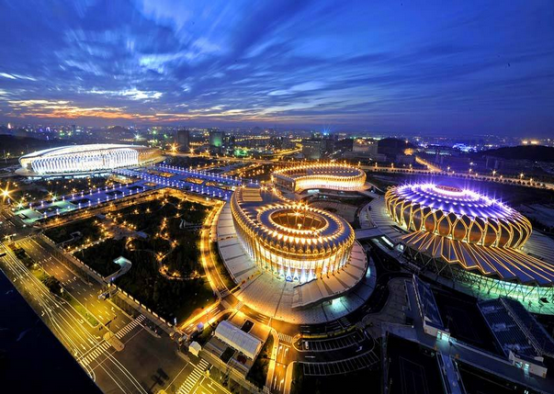About Jinan
Jinan is the capital of Shandong province in Eastern China. The area of present-day Jinan has played an important role in the history of the region from the earliest beginnings of civilization and has evolved into a major national administrative, economic, and transportation hub. The city has held sub-provincial administrative status since 1994. Jinan is often referred to as the "Spring City" for its well-known 72 artesian springs inside urban area. Its population was 7,067,900 in 2014 with an urban population of 4,693,700.

The modern-day name Jinan literally means "south of the Ji (Waters)" and refers to the old Ji River that had flowed to the north of the city until the middle of the 19th century. The Ji River disappeared in 1852 when the Yellow River changed its course northwards and took over its bed. The current pronunciation of the character "Ji" with the third tone ("jǐ") was established in the late 1970s. Prior to this, it was pronounced with the fourth tone ("jì"). Older texts spell the name as "Tsinan" (Wade-Giles romanizaton) or "Chi-nan".
Jinan is located in the north-western part of Shandong province at 36° 40′ northern latitude and 116° 57′ east of Greenwich, about 400 kilometers (250 mi) south of the national capital of Beijing. It borders Liaocheng to the southwest, Dezhou to the northwest, Binzhou to the northeast, Zibo to the east, Laiwu to the southeast, and Tai'anto the south. In the relief of the region, the city occupies a transition zone between the northern foothills of the Taishan Massif to the south of the city and the valley of the Yellow River to the north. Karst aquifers in limestone formations sloping down from the south to the north give rise to many artesian springs in the city center as well as in surrounding areas.
Local residents in the city proper, as well as in the surrounding areas, have traditionally spoken the Jinan dialect of Mandarinthat is not readily understood even by native speakers of standard Mandarin. The younger people of Jinan are more likely to speak standard Mandarin, whereas many older residents retain strong local dialect elements in their speech. Nevertheless, even the younger residents of Jinan tend to retain a strong local accent and mix local vocabulary into the standardized Mandarin vocabulary. Due to the influx of migrant workers during the past decade of China's economic boom, many of the current population that are of working age are not natives of Jinan but have learned to understand the Jinan dialect.
With the shift of the Yellow River to a new bed right to the north of Jinan (in 1852) and the establishment of a railroad hub, the city became a major market for agricultural products from the productive farming regions to the north. Following the trade in agricultural goods, the city developed a textile and clothing industry, flour mills, oil presses, as well as factories producing paper, cement, and matches. In the 1950s, large iron and steel works as well as chemical factories were established around Jinan. The large metal works produce pig iron, ingot steel, as well as finished steel. In 2008, steel manufacturing was restructured with the formation of the Shandong Iron and Steel Group. In the 1970s, factories for the production of trucks and construction vehicles (Sinotruk) were added.

